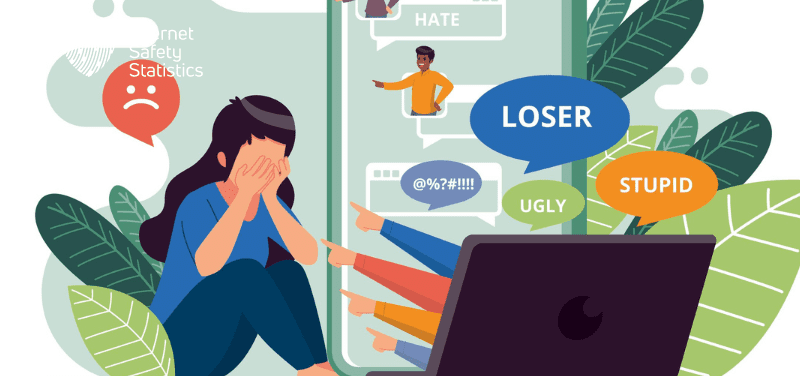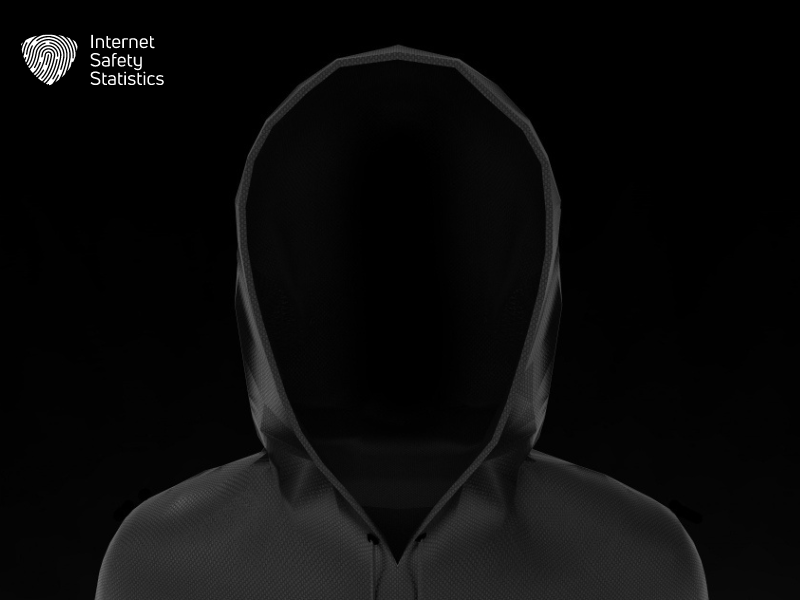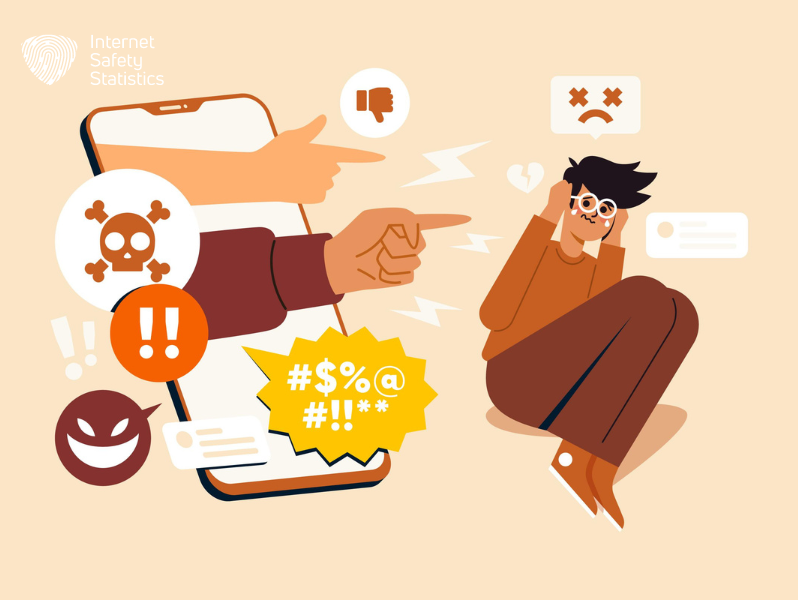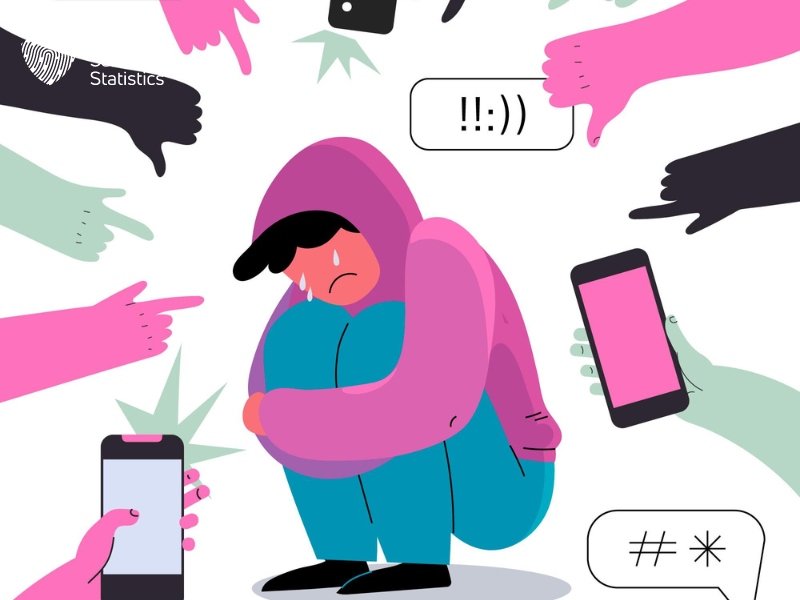
The pervasive influence of social media bullying on today’s children and youth is undeniable. As denizens of the digital era, individuals often find themselves navigating two distinct realms—the virtual and the real. Being online and active on social media platforms creates a virtual life, a space that facilitates communication but also exposes users to potential threats, as this virtual life can be manipulated or harmed by others. This article aims to delve into the intricate landscape of social media bullying, also known as cyberbullying, shedding light on its impact and exploring ways to address this pressing issue.
Understanding Cyberbullying
In the landscape of cyberbullying, a profound comprehension of its dynamics is crucial for effectively combating this digital menace. Cyberbullying goes beyond the traditional boundaries of physical bullying, making it a complex and challenging issue to address. Here, we explore key aspects that contribute to a deeper understanding of this phenomenon:
Digital Landscape and Boundless Reach
The digital era has given rise to an expansive virtual landscape where individuals, especially children, spend a significant portion of their time. Unlike physical bullying that is confined to specific locations, cyberbullying can infiltrate any space with an internet connection, expanding the reach of harassment into homes and personal spaces.
Anonymity and Masked Identities

One of the distinctive features of cyberbullying is the potential for anonymity. Perpetrators can conceal their identities, making it challenging for victims to identify their aggressors. This anonymity often emboldens bullies, fostering an environment where they feel shielded from accountability.
Underreporting and Fear of Consequences
A pervasive issue in addressing cyberbullying is the underreporting of incidents by victims. Children, fearing repercussions such as loss of internet privileges, often choose silence over seeking help. This reluctance to report further complicates efforts to identify and intervene in cases of online harassment.
Psychological Impact on Victims
The psychological toll of cyberbullying is profound. Unlike physical bullying, the scars left by online harassment may not be visible, but the emotional and mental impact can be severe. Victims often experience heightened levels of stress, anxiety, and depression, affecting their overall well-being.
Root Causes and the Cycle of Bullying
Addressing cyberbullying requires a nuanced understanding of its root causes. Many cyberbullies themselves may be victims of various pressures or insecurities, leading them to lash out online. Breaking the cycle of bullying involves not only addressing the symptoms but also delving into the underlying issues that drive such behaviour.
Educational Initiatives and Digital Literacy
To tackle cyberbullying effectively, there is a need for comprehensive educational initiatives. This includes promoting digital literacy among children, teaching them responsible online behaviour, and fostering a culture of empathy and respect in virtual spaces.
Legal Implications and Consequences
Legislation surrounding cyberbullying varies across jurisdictions, and understanding the legal implications is essential. Legal measures can serve as a deterrent and provide justice for victims, but they must be complemented by educational efforts to address the issue at its core.
The Silent Struggle
In the realm of cyberbullying, the silent struggle represents a pervasive challenge that often goes unnoticed, as victims and even perpetrators choose silence over speaking out. Understanding the nuances of this silent battle is crucial for devising effective strategies to address the underreporting of cyberbullying incidents.
Fear of Internet Privilege Loss
One of the primary reasons for the underreporting of cyberbullying is the fear among victims, particularly children, of potential consequences. Many are reluctant to come forward due to the perceived threat of losing internet privileges. This fear adds an additional layer of complexity to the issue, as it impedes the identification and resolution of online harassment.
Cultural Stigma and Shame
The pervasive stigma attached to being a victim of cyberbullying can contribute to a culture of silence. Victims may feel a sense of shame or embarrassment, fearing judgment from peers, family, or the broader community. This cultural stigma intensifies the internal struggle faced by victims, deterring them from seeking help.
Perpetrators as Victims
Interestingly, the silent struggle extends beyond victims to include the perpetrators themselves. Cyberbullies are not immune to pressures or insecurities, and their actions may stem from a variety of personal challenges. Addressing the silent struggle requires acknowledging the multifaceted nature of the issue and understanding the complex dynamics that contribute to online harassment.
Professional Help for Bullies
Recognising that cyberbullies may be victims of their own circumstances emphasises the need for a holistic approach. Intervention strategies should extend beyond supporting victims to also assessing whether perpetrators require professional help. This shift in perspective challenges the traditional narrative and opens avenues for comprehensive solutions.
Breaking the Cycle of Silence
Breaking the silent struggle necessitates creating an environment where individuals feel safe to share their experiences without fear of judgment or reprisal. This involves fostering open communication channels at home, in schools, and within the digital community. Encouraging dialogue about cyberbullying reduces the stigma associated with being a victim and promotes a culture of empathy and support.
Community Awareness and Education
Raising awareness about the silent struggle is integral to breaking the cycle. Communities, schools, and online platforms must actively engage in educational initiatives that promote empathy, understanding, and inclusivity. By collectively acknowledging the silent struggle, society can work towards creating an environment where victims and perpetrators alike feel empowered to seek help.
Online Mental Health Resources
Recognising the psychological toll of cyberbullying, it is imperative to provide accessible online mental health resources. These resources can offer support to victims, perpetrators, and bystanders alike, fostering a culture of mental well-being within the digital landscape.
Forms of Cyberbullying in Social Media

Social media platforms, while serving as vital tools for communication and connection, unfortunately, can become breeding grounds for various forms of cyberbullying. Understanding the specific manifestations of social media bullying is crucial for identifying and addressing this pervasive issue:
Promotion of Hate Speech
One of the most prevalent forms of cyberbullying on social media is the promotion of hate speech. This involves the targeted use of discriminatory language and derogatory comments aimed at demeaning an individual based on their race, ethnicity, physical appearance, or religious beliefs. Social media websites such as Facebook, Twitter, and MySpace frequently witness the dissemination of hate speech, creating a hostile environment for victims.
Mockery and Ridicule
Cyberbullies often resort to mockery and ridicule as a means of tormenting their victims. The targeted individual may face public humiliation through the posting of mocking comments, memes, or images, causing emotional distress and a sense of isolation. This form of cyberbullying not only damages the victim’s self-esteem but also encourages others to participate in the bullying process.
Impersonation
An insidious form of social media bullying is impersonation, where a perpetrator creates fake profiles or accounts to deceive and harass the victim. This can involve using the victim’s name, photos, or personal information to spread false and damaging content. The victim, often unaware of the impersonation, may suffer reputational harm and emotional distress as a result.
Public Shaming and Exclusion
Social media platforms provide a stage for public shaming and exclusion, wherein individuals are targeted for their perceived differences. Cyberbullies may orchestrate online campaigns to isolate and ostracise their victims, further amplifying the negative impact on the victim’s mental and emotional well-being.
Online Rumors and Gossip
The rapid dissemination of information on social media makes it a fertile ground for the spread of rumours and gossip. Cyberbullies exploit this by spreading false and damaging information about their victims, tarnishing their reputation and fostering a hostile online environment.
Cyberbullying Through Images and Videos
Visual content, such as edited images or videos, can be wielded as powerful tools for cyberbullying. Perpetrators may manipulate images or record videos with the intent to humiliate and harm their victims. The widespread sharing of such content amplifies the impact and perpetuates the cycle of bullying.
Doxxing
A more severe form of social media bullying is doxxing, where personal and private information about an individual, such as their address or contact details, is maliciously shared online. This invasion of privacy not only poses a direct threat to the victim’s safety but also intensifies the emotional toll of cyberbullying.
How Parents and Teachers Can Intervene

Addressing social media bullying requires a collaborative effort from parents, teachers, and other responsible adults. Recognising the signs and implementing proactive strategies are crucial in creating a supportive environment for children. Here’s an in-depth exploration of how parents and teachers can effectively intervene:
Recognising Signs of Social Media Bullying
Parents and teachers should stay vigilant and be attuned to potential signs of social media bullying. Changes in a child’s behaviour, such as increased stress, anxiety, depression, or a sudden withdrawal from social activities, may indicate they are experiencing online harassment. Additionally, a decline in academic performance or reluctance to engage in conversations about online activities can be red flags.
Open Communication Channels
Fostering open communication between parents, teachers, and children is paramount. Creating an environment where children feel comfortable sharing their online experiences and concerns without fear of judgment is crucial for early intervention. Regular check-ins about their online interactions help establish trust and enable timely responses to potential issues.
Monitoring Online Activity
Parents can actively monitor their child’s online activity, especially on social media platforms. This doesn’t mean invading their privacy but rather maintaining a watchful eye on changes in behaviour or signs of distress. Utilising parental control tools and privacy settings can assist in managing and ensuring a safe online environment for children.
Educating Children About Cyberbullying
Both parents and teachers play a vital role in educating children about the consequences of cyberbullying and the importance of responsible online behaviour. Promoting digital literacy and discussing the impact of words and actions in the virtual world can empower children to navigate online spaces safely.
Creating a Supportive School Environment
Teachers should be proactive in creating a supportive school environment that actively addresses social media bullying. This involves incorporating anti-bullying programs, fostering a culture of empathy, and implementing clear protocols for reporting and addressing instances of cyberbullying. A safe school atmosphere encourages students to seek help when needed.
Implementing Anti-Bullying Policies
Schools should have comprehensive anti-bullying policies in place, specifically addressing cyberbullying. These policies should outline clear consequences for perpetrators and provide support mechanisms for victims. Regular training for teachers and staff on identifying and addressing cyberbullying is essential for effective implementation.
Encouraging Bystander Intervention
Both parents and teachers should encourage bystander intervention. Teaching children to speak up and report instances of cyberbullying when they witness them can create a collective effort to curb such behaviour. Bystander intervention empowers the community to actively contribute to a safer online environment.
Collaboration Between Home and School
Establishing a collaborative partnership between parents and teachers is crucial. Regular communication about a child’s behaviour and experiences both at home and in school enables a holistic understanding of their well-being. Joint efforts ensure a unified approach to addressing social media bullying and supporting the child effectively.
Referring to Mental Health Professionals
If signs of distress persist or escalate, parents and teachers should consider referring the child to mental health professionals. These professionals can provide additional support and counselling to help the child cope with the emotional impact of cyberbullying.
Reporting and Documenting Incidents
Both parents and teachers should be aware of the reporting mechanisms available on social media platforms and in schools. Prompt reporting of incidents, coupled with documenting evidence, is crucial for taking effective action against cyberbullying.
Cyberbullying can become very serious, and it shouldn’t be taken lightly. As more kids get access to the online world, more cases of cyberbullying surface. In a recorded severe case, cyberbullying has led a 15-year-old boy, who allegedly faced cyberbullying, to commit suicide.
In the complex web of social media bullying, awareness and proactive intervention are paramount. This article serves as a call to action, urging parents, teachers, and society at large to unite against this pervasive menace, fostering a digital environment where children can thrive without fear of harm or harassment.
